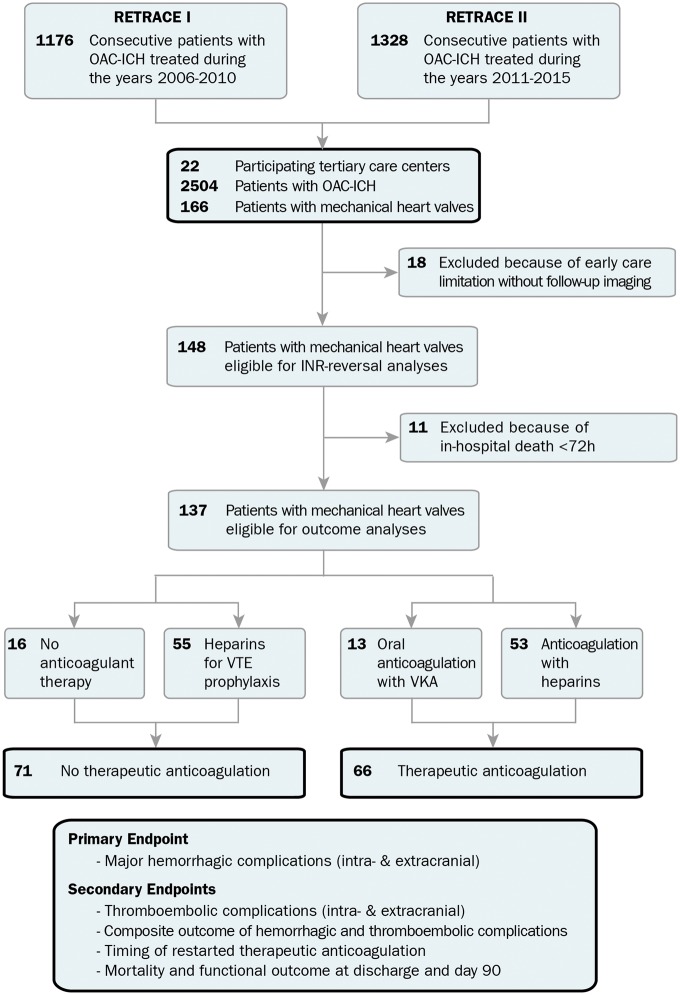Figure 1.
Study profile and numbers of participants. Individual level data of 2504 patients with anticoagulation-associated intracerebral haemorrhage were pooled and screened for the study. We identified 166 patients with mechanical heart valves in situ. For analysis of anticoagulation reversal, we excluded 18 patients because of early treatment restriction without follow-up imaging. For analysis of anticoagulation resumption, because of the predefined quarantine period of 72 h, we excluded additional 11 patients with early (<72 h) in-hospital death. For outcome analyses, 137 mechanical heart valve patients were eligible and were dichotomized into patients restarted on therapeutic anticoagulation vs. those without therapeutic anticoagulation. Therapeutic anticoagulation consisted either of restarting vitamin-K antagonists (n = 13) or systemic heparinization (n = 53). We defined major haemorrhagic complications as primary safety outcome measure consisting of (i) any intracranial haemorrhage, i.e. new intracerebral haemorrhage distant from the initial haematoma, any delayed haematoma enlargement >33% occurring beyond the 72 h quarantine period, and new subarachnoid or sub-/epidural haemorrhage, as well as (ii) any major extracranial hemorrhage [i.e. acute decrease (<24 h) in haemoglobin ≥3 g/dL, transfusion ≥2 units packed red blood cells, bleeding in critical site: intraspinal, intraocular, pericardial, articular, retroperitoneal, or fatal bleeding). We defined thromboembolic complications as intracranial, i.e. ischaemic stroke (unrelated to intracranial interventions scored upon serial follow-up imaging), or extracranial thromboembolic complications, i.e. systemic embolism, myocardial infarction (ST-elevated myocardial infarction and non-ST-elevated myocardial infarction with troponin elevation >99th percentile upper reference limit), valve thrombosis (evaluated through routine echocardiography or computed tomography), or symptomatic pulmonary embolism. Coincidence of intra- and extracranial thromboembolic complications were scored as intracranial, e.g. valve thrombosis with ischemic stroke. ICH, intracerebral haemorrhage; OAC, oral anticoagulation; VTE, venous thromboembolism.

